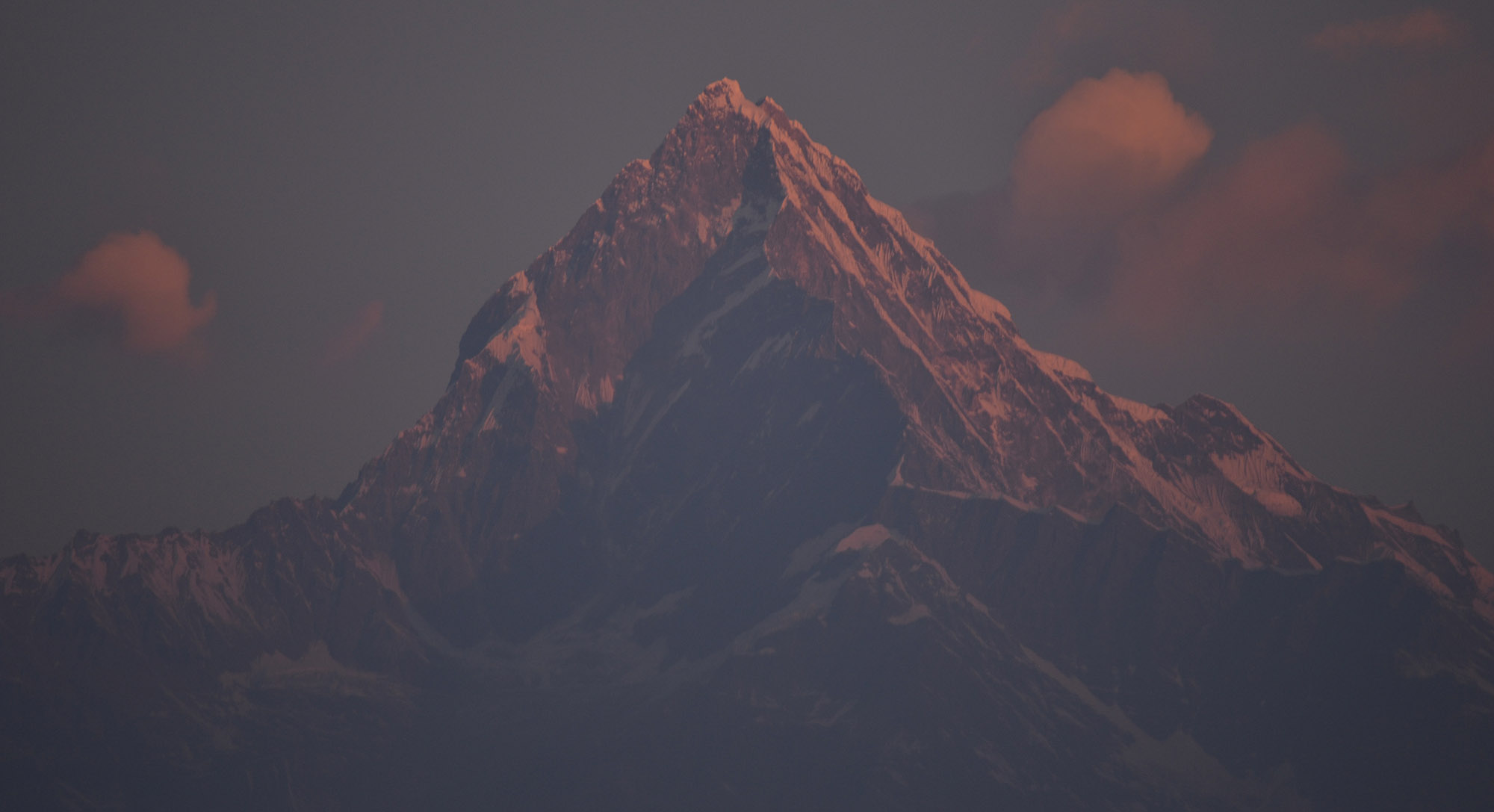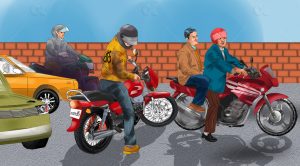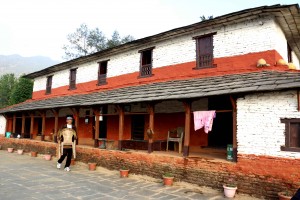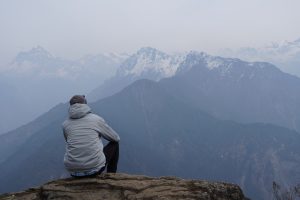Somewhere behind the hills girdling the lake there was a village that had stunning views of the mountains we could see in the distance. I heard that from a man who lived near the lake. He told us it was half a day’s hike to that village. I figured a place had got to be pretty if someone who lived on the Begnas recommended it.
Also I had begun to get bored with walking along the lake. So I found myself climbing up a steep trail into a forest of sal trees.
The trees were of uniform thickness; underfoot, there was a carpet of russet leaves. A trail wove through like the marks left behind by a giant serpent. I went deeper into the forest, my footsteps sounding like the chewing of cornflakes. Then an explosive beating of wings.
Khalij pheasants scuttled away, frightened out of their wits. After the second or two that took for me to recover from the sudden fluttering, I began walking again. Khalij were a good sign. I was in a wild place—or at least some place less urban.
Around the next corner, however, I lost the trail. To got an idea of my location, I clambered up a hillock. In the distance, tucked in a fold between hills, was a small pond. It was surrounded by a moss-coloured bog. It looked like the pond was on the verge of seeping completely into the earth.
Soon, a local appeared with his buffaloes. He guided me to the trail toward Thulakot, my destination.

I walked for about ten minutes and came to a paved road. A dirt bike zoomed by. The bike’s muffler had been removed, and its raucous sound bit into the ears. When I was told that I had to continue down the paved road for a while, I began to doubt if Thulakot was worth the hike. Even though I had done it several times, suddenly watching kingfishers and eagles, fishermen and the fish market seemed more worthwhile.
The banks of the lake, even when I had sauntered along it three to four times already, seemed a better walk than a paved road with screaming dirt bikes on it.
It turned out that I needed to be on the dirt road for less than a kilometer. Then I turned onto a flight of stone steps – Gurung escalator as one friend calls them – toward another hill.
The cluttered world with its various pollution and excesses seemed to fall away with every step. Eagles wheeled in the deep blue sky. More mountains appeared on the horizon. The sun’s rays began to prick like needles.
***
I climbed up a corkscrew trail into a pine forest. A shadow glided over us—a large vulture. It seemed like spooking khalij was a ritual before entering a forest: a flock of them glided into the bushy slope. The forest had laid out a banquet of golden Himalayan raspberries. I stuffed myself greedily.
Before I knew it, I was at a small shrine. A village was visible on a nearby hill—Thulakot. Egyptian vultures were gliding by low, as if on a reconnaissance mission.
There was nothing special about Thulakot.
Tourism nourishes, but it also disfigures: a place needs to be nondescript to save its soul. Thulakot was safe from that kind of onslaught. It had splendid mountain views. There was a tree that, according to a signboard, was five centuries old. Other than that it was nothing but a village on a hill.
The mountains you saw from there were the same ones you could see from Pokhara, although they were much closer. But it was not about getting closer to the mountains; it was about increasing your distance from the clangour of the world.
Checklist
The mountains you see from Thulakot are the same ones you would see from Pokhara, but at Thulakot, they are much closer to your eyes.
Getting there

Thulakot is (for slow walkers) a five hour hike from Begnas Tal. Walk along the southern shore of Begnas, then follow the shore as it curves north. You will come to a small village. Ask the locals there for the trail to Thulakot. There are multiple trails in some places after that. Remember to keep going north. There are no indicators on the trail to direct you toward Thulakot, so when you ask locals for directions ask them for specific landmarks to help you stay on the right path.
Places to Stay

You will be relying on the hospitality of locals when in Thulakot. Some of the houses were damaged during the 2015 earthquake, so there might be a problem to find accommodation for large groups. If you are the kind of hiker who must have a clean and comfortable bed at the end of the day, you are likely to be disappointed.
For those who can rough it, the village will have a spare mattress or two for sure.
There are hotels galore in Begnas. Grand Hotel Begnas (061-561129; Begnas Sadak, Lekhnath), located at a stone’s throw away from the lake, has clean, spacious rooms at affordable prices. There are several small, family-run hotels on the hill on the western corner of the lake.
While in Begnas

Begnas Tal is the older version of Phewa Tal. The water is cleaner, the setting still rustic, and the number of visitors low enough to feel like being in a village rather than a tourist destination. Boating is a much more serene affair here. Take a boat to the northern shore, which only has a couple of houses in the name of habitation. Early morning or late evening boat rides are especially enjoyable.
If you are not into hiking half a day up a hill to get to Thulakot, you can sample the wilderness, the birdlife and the quiet by taking a walk along the lake’s shore. A longer walk (or a short bus ride) east from the small Begnas bazaar toward Rupa Tal has some spots with panoramic views of the mountains.
***
More destinations around Pokhara
Chasing a Himalayan sunrise at Poon hill
Silhouettes and Silence in Nepal’s Begnas Lake

























